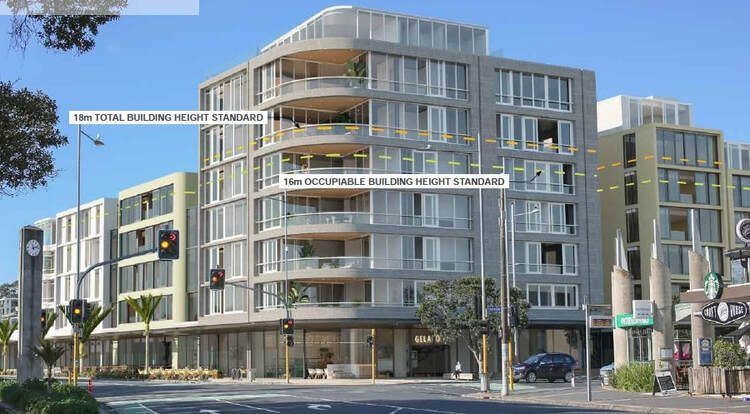Mission Bay development |
We have been fighting a proposal to build a complex of up to 8 storeys and 28m high on the corner of Tamaki Drive and Patteson Ave. This is completely out of line with the Unitary Plan rules which envision 4 storeys or 16 m height, and it is also totally inappropriate for Mission Bay.
The proposal has been rejected every step of the way by consenting authorities:
|
We are waiting to see if it is appealed to the Appeals Court, or whether the development as proposed is dead.
While this project is looking increasingly unlikely to proceed in its current form, there is little doubt that the site will be redeveloped at some point, as it is one of the prime development sites in Auckland. Our goal will be to work with a developer to ensure that we get a great development that fits well into the Mission Bay environment and provides adequate space for services for local residents. This would include retaining the upstairs hospitality space, improving al fresco dining options and ensuring adequate space to meet the needs of a growing local community.
While this project is looking increasingly unlikely to proceed in its current form, there is little doubt that the site will be redeveloped at some point, as it is one of the prime development sites in Auckland. Our goal will be to work with a developer to ensure that we get a great development that fits well into the Mission Bay environment and provides adequate space for services for local residents. This would include retaining the upstairs hospitality space, improving al fresco dining options and ensuring adequate space to meet the needs of a growing local community.


 RSS Feed
RSS Feed